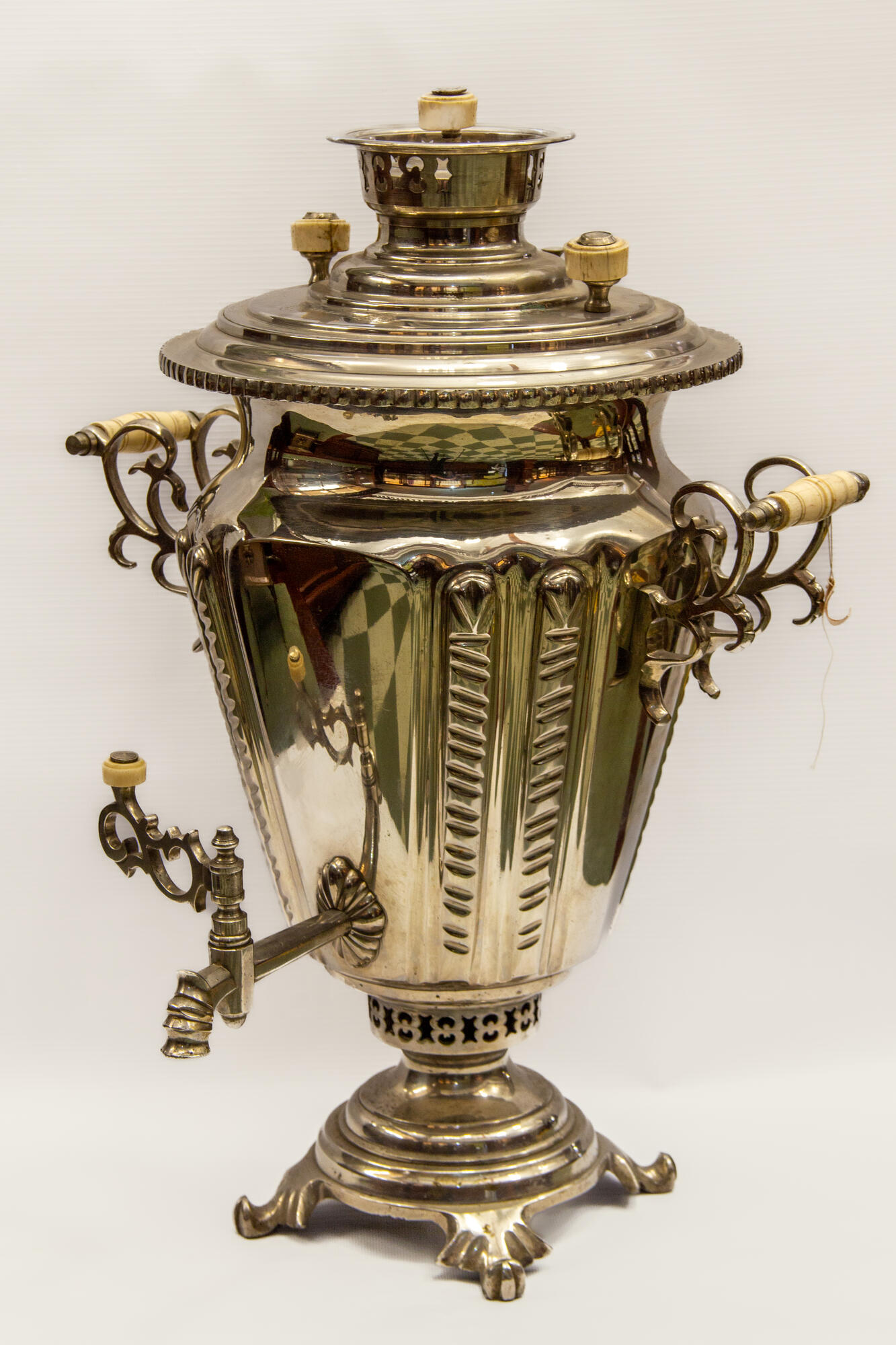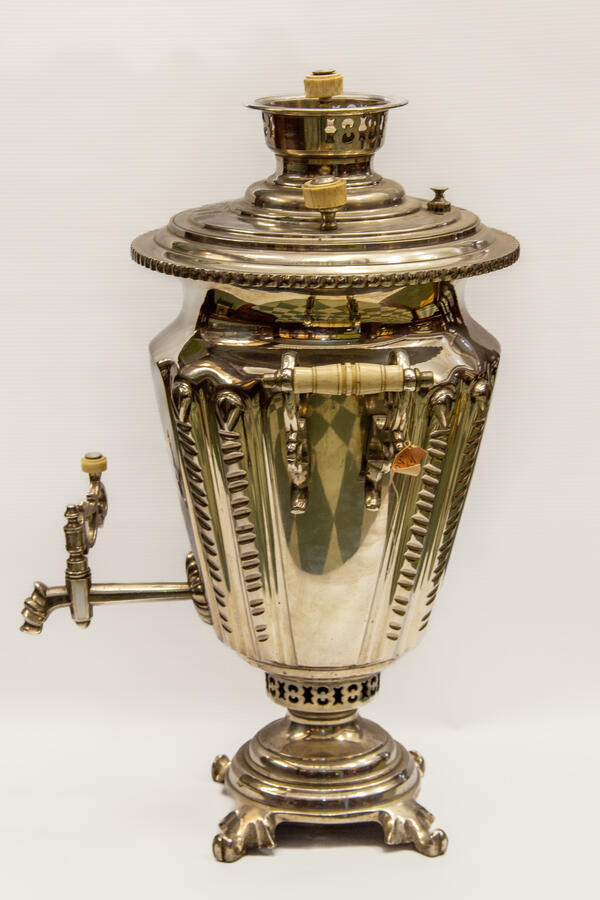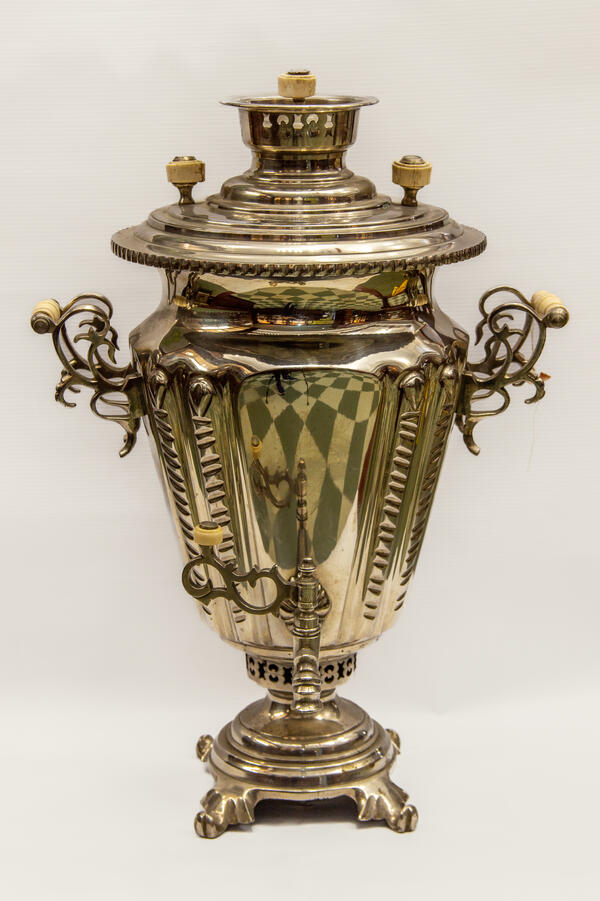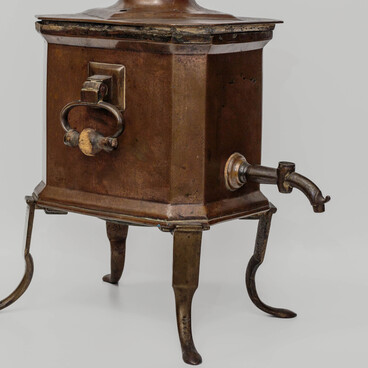A samovar is a metal vessel for boiling water and making tea. Initially, the water was heated by an internal furnace — a tall tube filled with charcoal. Later, other types of samovars appeared, which used kerosene, electricity and other resources as fuel. The oldest samovar was found in Azerbaijan. It is estimated that it is 3,700 years old.
There is a legend that Peter I brought the samovar to Russia from Holland, however, in reality samovars appeared only half a century after Peter’s death. In Russia, samovars were originally produced in the Urals. Historical data indicates that the title of the first samovar maker belongs to the Irginsky plant (now the village of Nizhneirginsky). Documents from 1740, bear the first mention of a 16-pound tinned copper samovar made at the Irginsky plant. The first mention of the Tula samovar is dated as late as 1746. Soon samovar production was established in Suksun. However, there is a version, according to which factories in Suksun and Tula began to produce samovars at the same time, as both these factories belonged to the Demidovs, and it was not difficult for them to transfer craftsmen from one place to the other.
The first historically registered samovar-makers were the Russian brothers Ivan Fyodorovich and Nazar Fyodorovich Lisitsyn, who lived in Tula. Samovar production turned out to be very profitable. Craftsmen quickly turned into manufacturers, and workshops were turned into factories. In 1808, there were eight samovar factories operating in Tula, and by 1850 there were twenty-eight establishments that produced about 120 thousand samovars a year along with a variety of other products made of copper.
In 1918, samovar factories were nationalized. In 1919, the state association of samovar factories was formed in Tula. In 1922, the production of samovars was established at the “1st State Copper Processing Plant in Kolchugino”. After the war, samovars were produced by only one factory — “Stamp”. In 1956, “Stamp” began to produce electric samovars. Due to mass installation of gas lines in residential buildings, samovars began to gradually fall out of use. Samovars fueled with combustible energy sources were the first to lose popularity. Electric samovars stayed relevant until the mid-1990s, when they began to be replaced by electric kettles with an automatic shut off function after the water reached boiling point.





